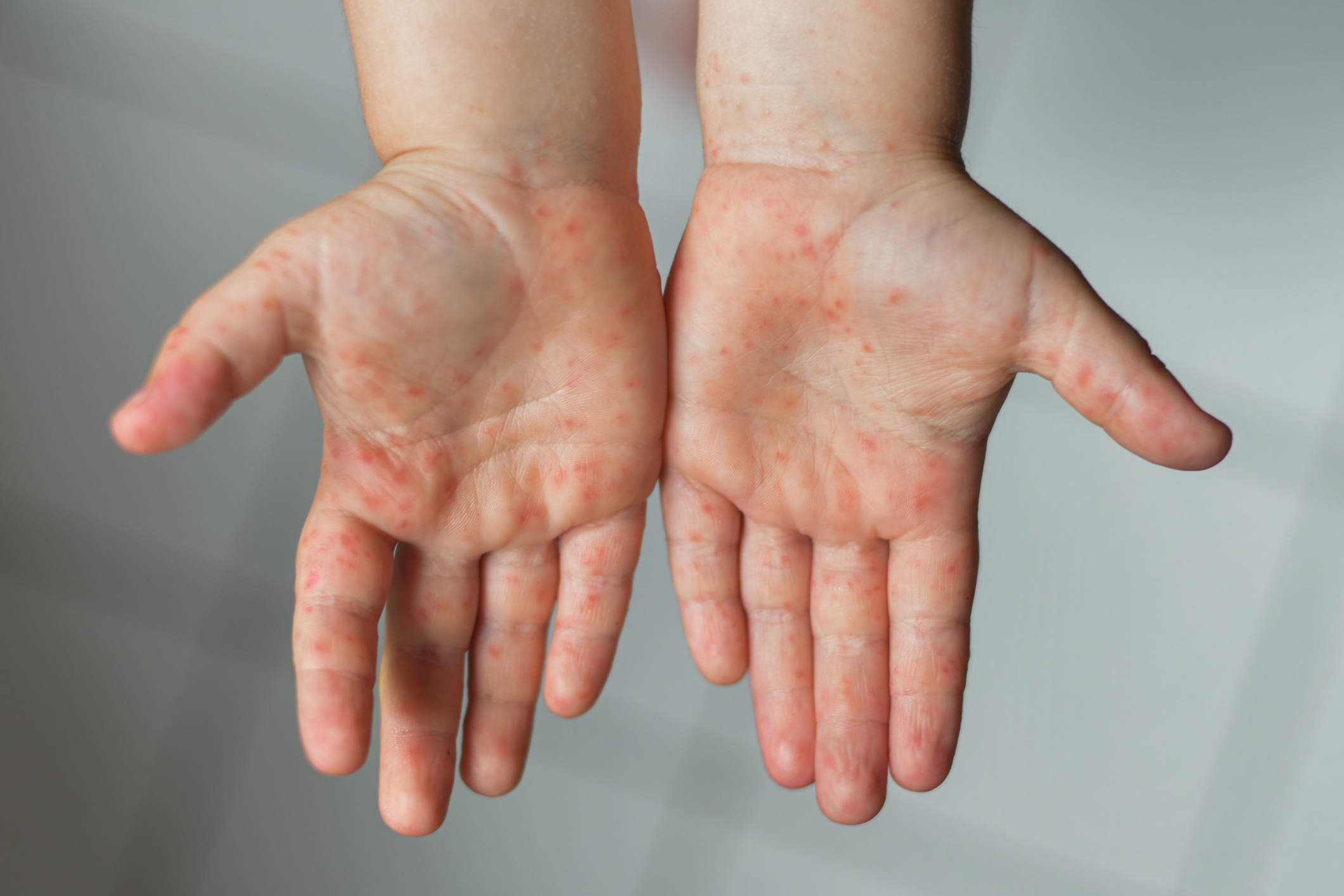Hand Foot Mouth Disease (HFMD) is a common viral infection that affects many children and adults. It is caused by a group of viruses known as enteroviruses. HFMD is most common in children under the age of five, but anyone can be infected with the virus. In the United States, HFMD is not considered a serious threat to public health, but outbreaks do occur from time to time, especially in childcare settings. It is estimated that about 200,000 cases of HFMD occur in the US each year.

What Is Hand Foot Mouth Disease?
HFMD is a viral infection that causes a rash and blisters on the hands, feet, and mouth. It is usually a mild illness that goes away on its own within a week or so. However, in rare cases, complications can occur, especially in people with weakened immune systems.
Causes & Types of Hand Foot Mouth Disease
HFMD is caused by several types of enteroviruses, most commonly the Coxsackievirus A16 and Enterovirus 71. These viruses are highly contagious and spread through contact with an infected person’s bodily fluids, such as saliva, mucus, or feces. The virus can also spread through contact with contaminated surfaces or objects, like clothing or furniture.
There are three types of HFMD: the typical form, the atypical form, and the severe form. The typical form is the most common and causes mild symptoms. The atypical form is less common and can cause more severe symptoms. The severe form is rare but can lead to serious complications.
Who’s At Risk?
HFMD can affect anyone, but it is most common in children under the age of five. Adults can also be infected, especially those who work with children or have close contact with infected people. People with weakened immune systems, such as those with HIV or cancer, are at higher risk of developing complications from HFMD.
Symptoms of Hand Foot Mouth Disease
The symptoms of HFMD typically begin with a fever and sore throat. After a few days, a rash may develop on the hands, feet, and mouth. The rash can be painful and may turn into blisters. Other symptoms may include headache, body aches, and vomiting.
Hand Foot Mouth Rash
The HFMD rash typically appears on the palms of the hands, soles of the feet, and in the mouth. In some cases, it may also appear on the buttocks or genital area. The rash usually begins as small red spots and may turn into painful blisters. The blisters may break open and form ulcers, which can be uncomfortable and make eating and drinking difficult. The rash may last for a few days to a week before gradually fading away. While the rash can be uncomfortable and sometimes painful, it is usually not serious and will go away on its own with time.
How Is It Diagnosed?
HFMD is usually diagnosed based on the symptoms and physical exam. A doctor may also take a sample of the throat or stool to test for the virus.
Treatment Options for Hand Foot Mouth Disease
There is no specific treatment for HFMD, but there are things you can do to relieve the symptoms. Pain relievers such as ibuprofen or acetaminophen can help reduce fever and relieve pain. Drinking plenty of fluids and eating soft foods can also help soothe a sore throat and mouth. It is important to stay home and rest until the symptoms go away to avoid spreading the virus to others.
In conclusion, Hand Foot Mouth Disease is a common viral infection that affects many children and adults. It is caused by a group of viruses known as enteroviruses and is most common in children under the age of five. The symptoms typically include a fever, sore throat, and a rash on the hands, feet, and mouth. While there is no specific treatment for HFMD, symptoms can be relieved with pain relievers, plenty of fluids, and rest. If you suspect you or your child has HFMD, it is important to stay home and avoid contact with others to prevent the spread of the virus. Want more information about the condition or other skin rash symptoms? Continue your search here:

